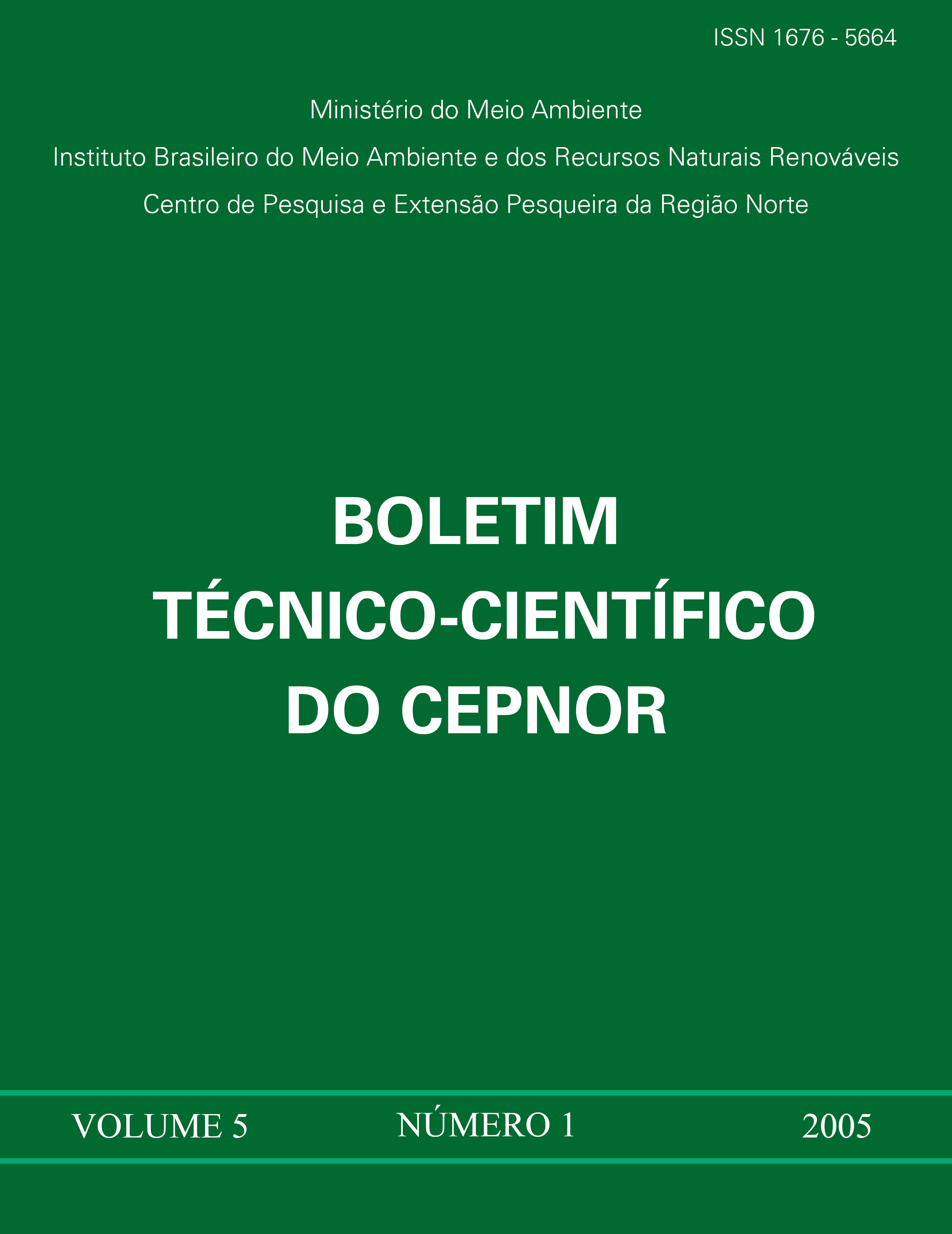1257 Descrição Dos Métodos De Captura Dos Camarões De Profundidade, Na Costa Norte Do Brasil, Durante O Projeto Proarrasto
Palavras-chave:
catching methods, deepsea-living shrimps, Northern BrazilResumo
The industrial fishing for shrimps has been on the increase since the 1950’s. At the
same time, conditions for commercialization, local market prices and increase of
the demand of fish products by richer countries (particularly, USA and Japan)
accounted for the quick growth of the fishing pressure on exploited stocks. The
main objective of this paper is to describe the catching methods applied to deepsealiving shrimp populations through experimental trawl fishing carried out on the continental shelf and slope off Northern Brazil, in depths from 236 m to 1,246 m.
Two fishing boats, named Mar Maria and Noé, made use of five types of nets and
three types of otter boards. Net # 1 was rigged to drag over most bottom substrates.
Net # 2 was rigged for catching demersal resources, showing the same features
and dimensions as the nets used by the Spanish fleet. Net # 3 was made after the
features of the nets used for catching the deep-sea shrimp off French Guiana and
Suriname. Net # 4 was also planned with the same features as those used by the
Spanish fleet, but 25% smaller. Net # 5 was planned for the fishing activities by
vessels rigged for stern otter trawling operations and having the same
characteristics as Net # 4. The net with better revenue (CPUE) was the # 2 one,
with a catch rate almost twice as large as the second more productive one (4 SM
net).





